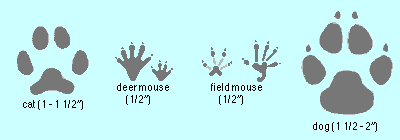
MIGRATE
ADAPT

Blog yang menyajikan informasi yang sangat dibutuhkan oleh masyarakat masa kini.
 You want to Increase Page Rank for Blogger or your site in no time ? Ok ,perfect ! All those what you have found from tips and tricks about SEO and Ranking may work ,but have you came across the tips which I found ?
You want to Increase Page Rank for Blogger or your site in no time ? Ok ,perfect ! All those what you have found from tips and tricks about SEO and Ranking may work ,but have you came across the tips which I found ?
All you need to try it here you wont be sorry ! go try it GUMGUM :) visit my another explained post about this tips about ranking
 Twitter is a service for friends, family, and co–workers to communicate and stay connected through the exchange of quick, frequent answers to one simple question: What are you doing?While Twitter may have started as a micro-blogging service, it is grown into much more than simply a tool to type in quick status updates. I often describe Twitter as a cross between blogging and instant messaging, but even that doesn't do it justice.
Twitter is a service for friends, family, and co–workers to communicate and stay connected through the exchange of quick, frequent answers to one simple question: What are you doing?While Twitter may have started as a micro-blogging service, it is grown into much more than simply a tool to type in quick status updates. I often describe Twitter as a cross between blogging and instant messaging, but even that doesn't do it justice.
 Want to get rid of the blogger toolbar in new blogger that just came out of beta ? If you have shifted your blogspot blog from old blogger to the new blogger beta, you may have noticed that the previous CSS code to remove the blogger navbar will no longer be effective. That's because Google now uses different CSS tags to display the blogger bar. [#navbar-iframe instead of #b-navbar] If you want to hide the navbar in your blogger blog, here's what you should do ! (these instructions refer to the "new" Blogger layouts templates) GO GET IT GUMGUM:)
Want to get rid of the blogger toolbar in new blogger that just came out of beta ? If you have shifted your blogspot blog from old blogger to the new blogger beta, you may have noticed that the previous CSS code to remove the blogger navbar will no longer be effective. That's because Google now uses different CSS tags to display the blogger bar. [#navbar-iframe instead of #b-navbar] If you want to hide the navbar in your blogger blog, here's what you should do ! (these instructions refer to the "new" Blogger layouts templates) GO GET IT GUMGUM:)
 Looking for professional Social Bookmark Buttons for your blog ! me too :) however, while i was searching the net too, I came across a post by Naeemnur, that had instructions for Blogger (BlogSpot.com) based blogs which was really good.If you have a blog on blogger you can definitely give this a try.
Looking for professional Social Bookmark Buttons for your blog ! me too :) however, while i was searching the net too, I came across a post by Naeemnur, that had instructions for Blogger (BlogSpot.com) based blogs which was really good.If you have a blog on blogger you can definitely give this a try.
Its very attractive social bookmarking widget ! it can help you to let your visitors bookmark your page effectively .
for instructions about the use of this SEXY Social bookmarking widget ! you can go here and get it GUMGUM:)
Blog Kita Bersama Copyright © 2009 REDHAT Dashboard Designed by SAER
0 komentar: